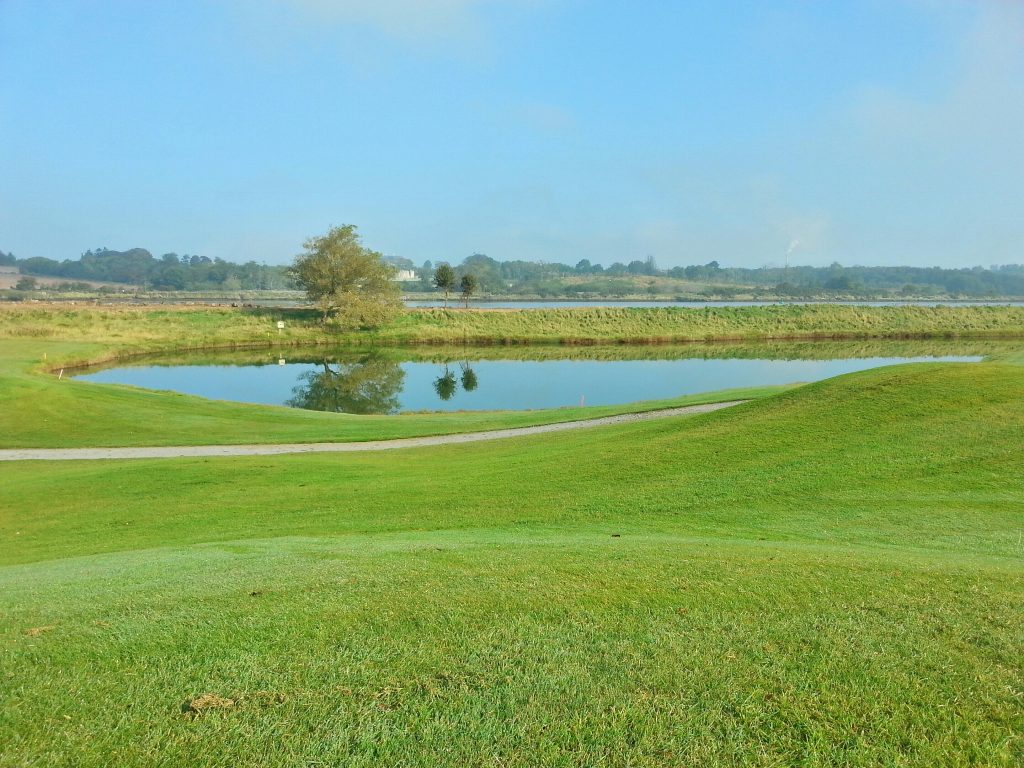
Water is more than a visual element in golf—it’s a strategic, ecological, and functional asset when thoughtfully integrated by expert golf course water bodies designers. In India’s climate-diverse environments, water elements serve multiple roles: from enhancing playability and aesthetics to managing irrigation and sustainability. This blog examines how golf design companies like GDI approach water body integration through the lens of design, hydrology, biodiversity, and risk-reward gameplay. Whether it’s a serene pond beside a green or a challenging carry over a lake, water features shape player psychology, landscape balance, and ecological harmony. For developers and golf course architects alike, well-planned water elements elevate a project from functional to unforgettable.
Water bodies in golf design aren’t just about visual appeal. They define strategy, shape the flow of a hole, and often become signature features. Golf course water bodies designers know how to create ponds and lakes that work with the natural slope, soil, and weather conditions, making the course more playable and scenic.
Smart placement of water hazards tests decision-making. Whether it’s a narrow fairway with a pond on one side or an island green surrounded by water, players must weigh aggression against caution. GDI uses golf architecture principles to embed water challenges at critical junctures, enhancing competitive play.
Water bodies play a critical role in irrigation. GDI’s expert golf consultants in India create hydrological systems that capture rainwater, reduce runoff, and maintain turf health. Golf course water bodies designers integrate pump systems, flow controls, and storage mechanisms into ponds and streams.
Beyond utility, water reflects the terrain, sky, and trees—amplifying a course’s visual signature. From meandering creeks to reflective lakes near the clubhouse, GDI ensures water features complement the topography. Their designs turn ordinary spaces into photogenic course landmarks.
Well-planned water bodies attract local flora and fauna—birds, amphibians, and aquatic plants—contributing to a balanced micro-ecosystem. Golf course water bodies designers understand how to balance water quality, movement, and edges to foster biodiversity without disrupting play areas.
Safety is critical. Water bodies must not flood, stagnate, or pose risks to players. GDI incorporates safe slope gradients, protective planting, and controlled overflow zones. Drainage channels and emergency runoffs ensure that water enhances the site rather than disrupts it.
From the contour-driven design at Kharghar Valley to eco-ponds planned for Noida’s course renovation, GDI demonstrates how water becomes both an artistic and technical element. Internationally, they draw from best practices to adapt solutions that suit Indian terrains.
As leading golf course water bodies designers, GDI places utility and sustainability at the core of water integration. Whether redesigning legacy courses or building new ones, every water element is designed with long-term functionality, cost-efficiency, and visual coherence.
For developers, water features are eye-catching and offer ROI. Homes with lake views sell better, and resorts built around golf courses with water bodies enjoy higher aesthetic value. GDI helps real estate and hospitality clients design impactful golf landscapes with integrated water systems.
Water bodies serve both aesthetic and strategic roles. They influence play, support turf irrigation, enhance biodiversity, and elevate the landscape’s visual appeal.
Golf course water bodies designers like GDI create smart hydrology plans, build catchment areas, and install efficient irrigation systems that recycle and manage water wisely.
Yes. Water elements can be retrofitted during renovation. GDI specialises in reimagining flat or underutilised land by adding ponds, lakes, and creeks without disrupting overall course layout.
Initial setup can involve costs, but GDI designs self-sustaining systems with natural filters, solar aerators, and efficient pumps to minimise long-term maintenance.
Waterfront homes command premium prices. Courses with scenic lakes or ponds become visual anchors for the entire development, increasing property desirability and branding.
